Orthopedics
Patient advice
Resume walking: Assisted recovery starts as early as during hospitalization, right from the bedside. As a rule, patients resume walking 2 days postoperatively. When you are discharged, you will receive a clear protocol with the movements allowed in the following period.
Sports activities: Return to physical activity depends on the type of surgery and the body's response. It can range from 3 weeks to 6 months, depending on the complexity and recovery capacity of each patient.
Postoperative pain: Pain management is a priority. The surgeon and anesthesiologist work together to reduce discomfort and ensure the most comfortable recovery.
Recovery time: This varies depending on the intervention:
- Hip/knee replacement: 3 months
- Knee arthroscopy: 2-3 weeks
- Ligamentoplasty: 3-6 months
- Hallux valgus: 4 weeks
- Nucleoplasty: 10 days
Length of hospitalization: Depending on the procedure, hospitalization may last:
- Cemented/non-cemented arthroplasties: 7-9 days
- Knee arthroscopy: 2 days
- Ligamentoplasty: 3 days
- Antep (hallux valgus): 3 days
- Nucleoplasty: 1 day
Anesthesia: It is determined by the anesthesiologist, depending on the associated pathology. A pre-anesthetic consultation takes place on the day of admission, after which the optimal type of anesthesia is chosen.
Autotransfusion: It is the transfusion of your own blood, collected and processed during surgery. The benefits are multiple: elimination of infectious risks, use of fresh blood and a better postoperative outcome.
Ligament tears are common after sports injuries, accidents or falls. In the first week intense pain, swelling and joint instability occur. Over time, these symptoms may subside, but the instability persists without surgery.
Left untreated, a torn ligament can lead to damage to the menisci and cartilage, increasing the risk of arthrosis.
Care of the operated area: After removal of the sutures, the area should not come into contact with water for 2 weeks. If the wound reddens or discharge appears, it is important to notify your doctor immediately.
Nutrition & hydration: Proper nutrition, rich in vitamins and iron, and adequate hydration are recommended to support the healing process.
Resume walking: Walking is resumed progressively - initially indoors, then outdoors on level ground and then on stairs. When you are discharged, you will be able to walk with the aid of a crutch with an elbow support, which you will use for about 3 months.
Exercise: Gymnastics is recommended several times a day, if possible in a specialized center, to speed recovery and prevent complications.
Resume current activities: Most daily activities can be resumed 3 to 6 weeks after surgery. It is normal to feel discomfort or fatigue during this period.
Monitoring for complications: After discharge, there is a reduced risk of postoperative complications, but it's essential to recognize signs of possible infection or deep vein thrombosis (DVT) early.
Signs of infection:
- Persistent fever over 38°C or chills;
- Redness, increased tenderness or swelling in the operated area;
- Discharge of secretions from the operated hip/knee;
- Increased pain at rest or on movement.
Signs of deep vein thrombosis (DVT):
- Pain in the thigh or calf, unrelated to the surgery;
- Swelling or discoloration of the lower limb.
Signs of pulmonary embolism:
- Difficulty breathing (dyspnea);
- Chest pain, especially on inspiration.
If you notice any of these symptoms, even a few weeks after the operation, contact your doctor urgently or call the clinic reception.
Precautions for hip replacement patients:
- Be careful in the first weeks postoperatively to avoid falls - they can damage the hip prosthesis. Use the crutch or ask for help until you regain muscle strength, mobility and balance.
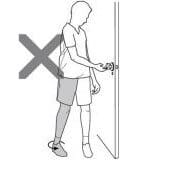
Do not excessively twist your legs and body in or out.
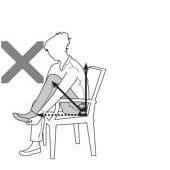
Don't flex your hips more than 90°.
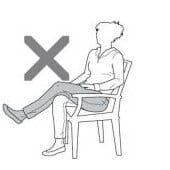
Don't cross your legs.
- Follow the recommended recovery program;
- Attendance at clinical and radiologic check-ups is essential.
Precautions for knee prosthesis patients:
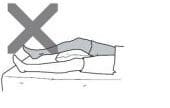
Do not sleep with a pillow under the operated knee. Your knee will heal without recovering full extension.
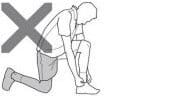
Do not lean on the operated knee.

Don't genuflect.
Recommendations for hip and knee replacement patients:
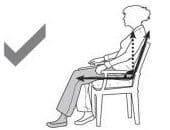
Sit on chairs that are high enough or use a cushion to raise the seat height.
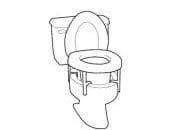
Use a toilet seat riser.
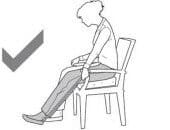
Use a longer-handled shoe to avoid flexing at the hip joint.
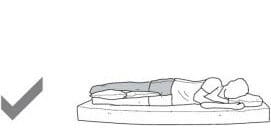
Sleep with a pillow between your legs for 3 months postoperatively.
Long-term advice after hip or knee replacement:
- Do a light exercise program regularly to keep your muscles toned and your hip or knee mobile.
- Be cautious and try to avoid falls or other accidents; in the event of a fall or other accident, you should see your orthopaedic surgeon immediately.
- Make sure that your dentist knows that you have a hip or knee prosthesis and that any work will be done under the protection of an antibiotic - for the rest of your life.
- Treat any infectious process (e.g. urinary tract infections, ENT infections) correctly under the guidance of your GP.
- Have an annual orthopedic check-up, which consists of a clinical examination and a check x-ray.
Request an appointment
Fill in the fields and a member of our team will contact you shortly for confirmation.